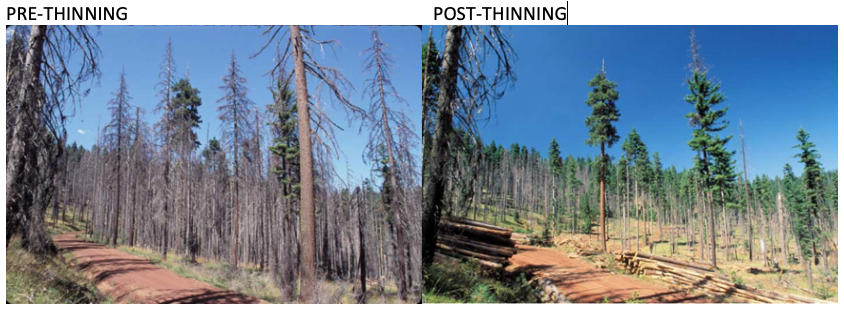Forested areas that had prescribed burns and tree thinning treatments in the Methow Valley in advance of the Carlton Complex fire experienced greater resiliency, according to a study published in Ecological Applications, the Ecological Society of America journal.
A University of Washington news release reports that a joint study conducted by University of Washington and US Forest Service researchers found that forests benefited from thinning and prescribed burns and that “even in extreme wildfires, reducing built-up fuels such as small trees and shrubs pays off.”
According to the University of Washington news release:
“Our study suggests that the fuel treatments were worth the investment, yielding a more desirable post-fire outcome than if they hadn’t been implemented,” said lead author Susan Prichard, a research scientist at the UW School of Environmental and Forest Sciences. “There are a lot of benefits to creating more resilient landscapes, and this study suggests that even in the worst-case scenario wildfires, it can be worth it.”
The joint study found that “even during the first explosive days of the Carlton Complex, areas that were thinned and prescribed burned had more trees survive than areas that didn’t receive those fuel treatments” and in fact, “some of the treatments measurably reduced fire impacts even under very hot, dry and windy conditions.”
Private forestland owners and working forests have used prescribed burns and thinning for some time now to maintain forest health and reduce the severity of wildfires.
Prescribed burns – also referred to as controlled burns – are intentional, low-intensity fires that help manage forestlands by reducing the dangerous accumulation of combustible fuels like shrubs, dead trees, grasses, and fallen foliage and branches. Forestry fire experts employ prescribed burns under specific weather conditions (usually cooler and wetter times of the year) to keep the hazard reduction burnings under control.
Thinning is the process of removing smaller, weaker trees in a forest stand to reduce tree density. Smaller trees can act as “ladder fuels” and create a pathway for fires to spread vertically into the canopy. Ensuring proper space between trees also can reduce vulnerability to disease and insects, further supporting healthy, resilient forests. In addition, thinning helps to improve wildlife habitat by allowing sunlight and rainwater to reach the ground, benefiting animals, plants and insects that live on the forest floor.
Researchers maintain that while their study focused on tree stands within the Carlton Complex fire, that its results could have “broader implications” for wildfire-prone wooded areas in other parts of the world.
“I’m hopeful our study will encourage policymakers as well as managers to invest in restoration,” Prichard said to the University of Washington. “It’s our best hope for protecting our streams, rivers and landscapes from catastrophic fires.”
